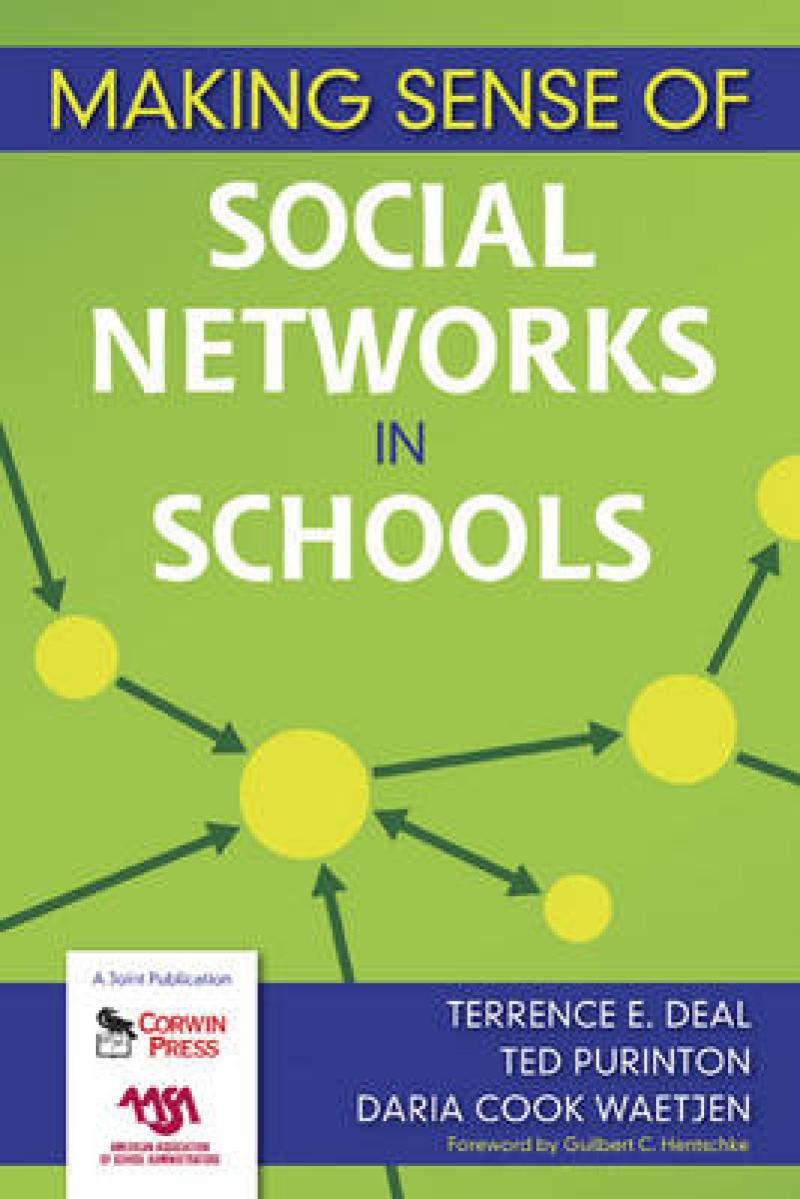Discover how social networks can foster learning communities and promote school improvement!
Social networks reflect the usually invisible relationships that control the power and flow of information within a school. This resource for school leaders examines types of networks-related to tasks, friendships, power, and culture-and provides tools for maximizing networks' positive schoolwide influence. You will find:
- Samples of social network maps that illustrate the relationships among players in various types of networks
- Steps for developing your own social network maps using interviews, surveys, and data analysis
- Strategies and practical advice for managing social networks in support of school goals
Les mer
With sample social network maps and steps for developing your own, this resource shows leaders how to navigate task, friendship, power, and culture networks to promote school goals.
Acknowledgments
About the Authors
Foreword by Guilbert Hentschke
Preface: What's in a Song?
Lyrics to Green Door
Introduction: The New Principal Encounters a Locked Door: Through a Smoky Cloud
Outside Looking In
Overview of the Book
1. A Glimmer of Networks: Saw an Eyeball Peepin'
Business Research
Predominance of Networks
Impact on Schools
Misreading Clues
The Context of Leadership
Managing Networks
Finding Direction
2. Network Basics: Green Door, What's That Secret You're Keepin'
Nuts and Bolts
Network Players
Whole Networks
The Key to the Green Door
3. Limitations of Task Networks: Door Slammed, Hospitality's Thin There
Searching for the Boss
Turned Down by the Boss
No Access
Finding Access
Awareness
Resources
Stephanie Relaxes the Rule Book
4. Friendship Networks: The Happy Crowd
Finding Friends
Someone Who Understands Me
Someone Convenient
The Impact of Comfortable Connections
Emotional Contagion
Informal Induction
Jasmine's Cost-Benefit Decision
Friendship and Productivity
Antipathy and Its Problems
The Blessings and Curses of Friendship Networks
5. Power Networks: Wish They'd Let Me In
Politics as Usual
Power Stars
Power as Perception
Power Players
Baskets and Eggs
Working the Power Networks
Principals as Politicians
6. Culture Networks: They Laugh a Lot Behind the Green Door
Stories and Traditions
Ties That Bind
The Way Things Are Done Around Here
Tribal Leaders, Mavericks, Mavens, Gossips, and Spies
The Door Ajar
Cultural Players
Trust Thy Neighbor
The Spirit Moves Her: A Principal Assumes the Dais
The Ghost of Garvey
A Bonding Moment
Reflecting on Garvey's Green Door
7. Scoping and Working the Networks: Midnight, One More Night Without Sleepin'
Promises and Caveats of Network Study
Beyond Individual Players
Learning Communities, Culture, and Communication
Making Sense of School Networks
Opening a Can of Worms: Big Brother or the Future of Leadership
Inside the Green Door
Appendix: Research on Networks in Sociology, Business, and Education
Network Literature
Network and Related Literature in Education
Our Endeavors in Social Network Analysis
References
Index
Les mer
"In an era of accountability and simplistic management 'quick fixes,' it is refreshing to see a volume dedicated first and foremost to understanding and building human relationships in schools. By developing strong networks, schools can foster open systems committed to distributive leadership and exemplary academic outcomes." -- Sharon Conley, Professor"The important message of this book-that tasks and people are important, but an understanding of power relationships and cultural bonds are crucial to effective leadership-is a message that must be understood by all who work to improve learning for all students in our schools." -- Stuart E. Gothold, Clinical Professor Emeritus, University of Southern California"Provides an intriguing insight into the reality and power of the human relationships that exist in our schools. This work offers alternative strategies for getting things done just as it proposes a new paradigm for thinking about the fundamental organization of the school. Readers will think about how they can lead most effectively with a new and challenging perspective." -- Joanne Rooney, Codirector"The authors have created a useful, practical, and compelling guide for school and district leaders as they navigate the complexities of school environments. They skillfully guide the reader to manage the school culture in ways to support student achievement and overall school improvement. The authors provide tools, strategies, and resources for site and district administrators to collect and analyze data about one of the most important and often-ignored resources: social capital." -- Delores B. Lindsey, Assistant Professor of Educational Leadership"A unique book in that it makes the invisible but powerful human dynamics among staff members within a school more transparent and user-friendly." -- Joy St. Pierre
Les mer
Produktdetaljer
ISBN
9781412954440
Publisert
2009-02-04
Utgiver
Vendor
SAGE Publications Inc
Vekt
280 gr
Høyde
228 mm
Bredde
152 mm
Aldersnivå
06, P
Språk
Product language
Engelsk
Format
Product format
Heftet
Antall sider
176
